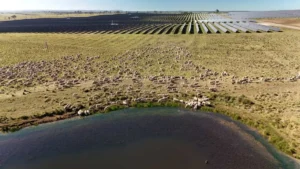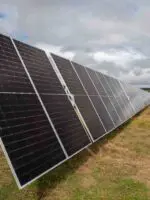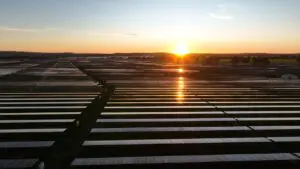SolarPower Europe’s annual progress report has revealed that the EU installed 41.4GW of new solar capacity in 2022, up 47% from the 28.1GW installed in 2021. That means that in one year, the total EU solar power generation fleet increased by 25%, to 208GW.
According to the report, 41.4GW amounts to enough power for the equivalent of more than 12 million European homes, replacing the equivalent of 102 LNG tankers.
In the face of a deepening energy crisis, the epic growth of the EU’s solar infrastructure is a marked step towards independence from foreign-source oil and gas, as well as a powerful rung on the decarbonisation ladder.
Germany was the standout EU member, installing 7.9GW of solar power this year, followed closely by Spain (7.5GW), Poland (4.9GW), the Netherlands (4GW) and France (2.7GW). In terms of watts per capita, the Netherlands came out on top, with solar providing 1,044 watts/capita in 2022.

“The numbers are clear,” says SolarPower Europe CEO Walburga Hemetsberger. “Solar is offering Europe a lifeline amid energy and climate crises.
“No other energy source is growing as quickly, or reliably, as solar. We’re building a secure, green, prosperous Europe on a foundation of solar.”
According to the report, solar growth shows no signs of slowing: the peak body’s prediction for 2023 is a whopping 53.6GW of additional solar power, and a potential 85GW of new solar power per year by 2026.

That’s still less than the International Energy Agency (IEA) recommends, with the agency encouraging the EU to install around 60 GW of solar power in 2023 to fill the gaps left by withheld Russian gas.
“It’s more than high time to take solar seriously,” said Dries Acke, policy director at SolarPower Europe.
“That means tackling barriers head on. We need more electricians and stable electricity market regulation. A solar-powered Europe can only be based on smoother administrative processes, speedier grid connections, and resilient supply chains.”










